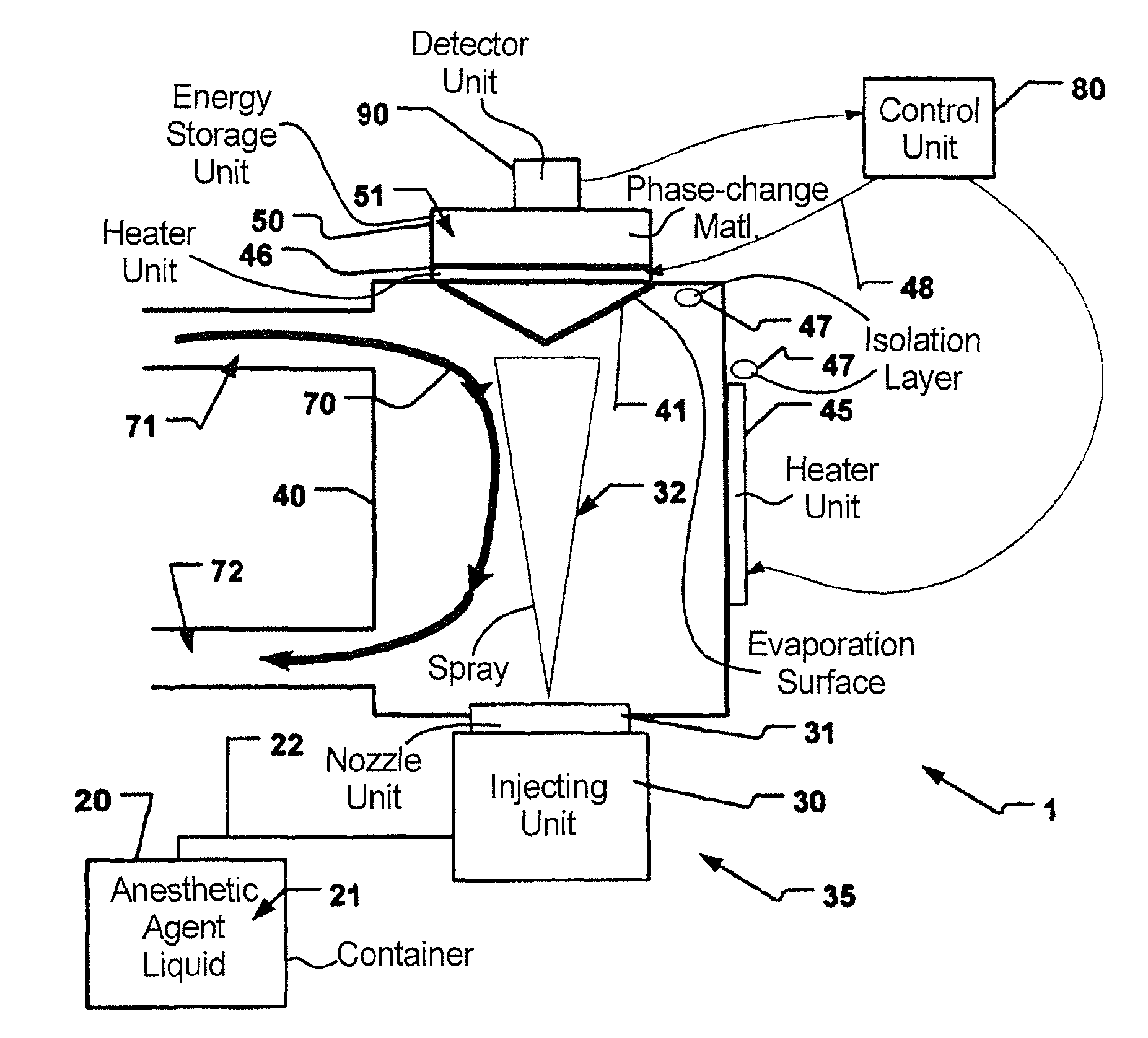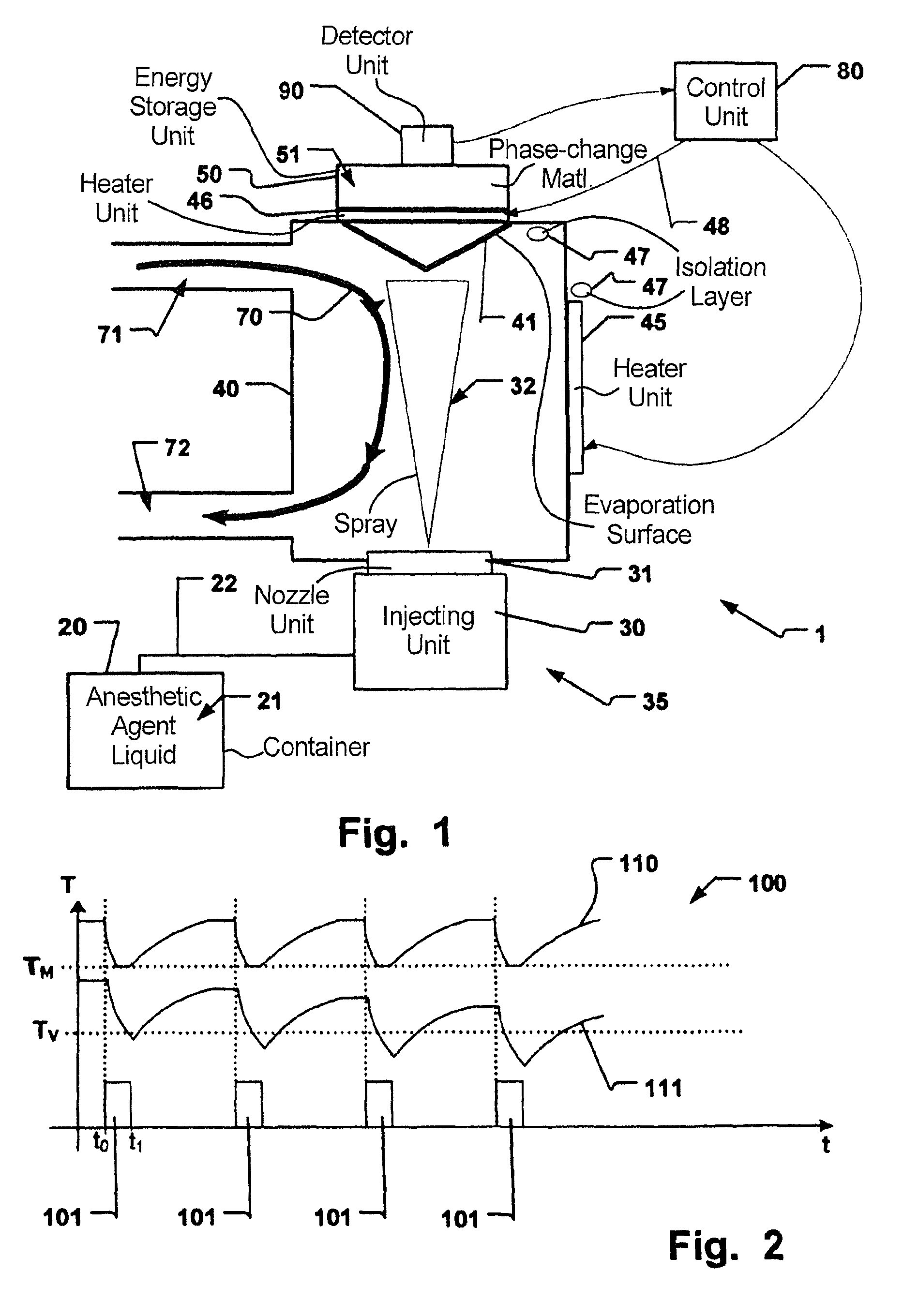Anesthetic vaporizer for a breathing apparatus and method for operation thereof to vaporize a liquid anesthetic agent
a technology of anesthetic vaporizer and breathing apparatus, which is applied in the direction of respirator, lighting and heating apparatus, combustion types, etc., can solve the problems of limited effect, high power not available at the vaporization site, and breathing apparatuses in which the injection vaporizer is used, so as to achieve advantageous vaporization
- Summary
- Abstract
- Description
- Claims
- Application Information
AI Technical Summary
Benefits of technology
Problems solved by technology
Method used
Image
Examples
Embodiment Construction
[0046]Specific embodiments of the invention will now be described with reference to the accompanying drawings. This invention may, however, be embodied in many different forms and should not be construed as limited to the embodiments set forth herein; rather, these embodiments are provided so that this disclosure will be thorough and complete, and will fully convey the scope of the invention to those skilled in the art. The terminology used in the detailed description of the embodiments illustrated in the accompanying drawings is not intended to be limiting of the invention. In the drawings, like numbers refer to like elements.
[0047]In an embodiment of the invention according to FIG. 1, an anesthetic vaporizer in form of an injection vaporizer 1 is provided. The injection vaporizer 1 is arranged for vaporizing an anesthetic agent liquid 21. The injection vaporizer 1 comprises an interior evaporation surface portion 41. The interior surface portion 41 is usually arranged inside the i...
PUM
 Login to View More
Login to View More Abstract
Description
Claims
Application Information
 Login to View More
Login to View More - R&D
- Intellectual Property
- Life Sciences
- Materials
- Tech Scout
- Unparalleled Data Quality
- Higher Quality Content
- 60% Fewer Hallucinations
Browse by: Latest US Patents, China's latest patents, Technical Efficacy Thesaurus, Application Domain, Technology Topic, Popular Technical Reports.
© 2025 PatSnap. All rights reserved.Legal|Privacy policy|Modern Slavery Act Transparency Statement|Sitemap|About US| Contact US: help@patsnap.com



